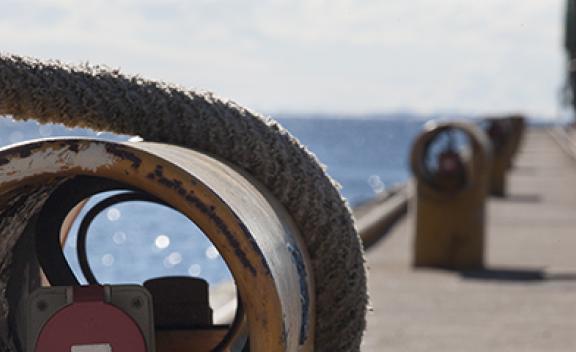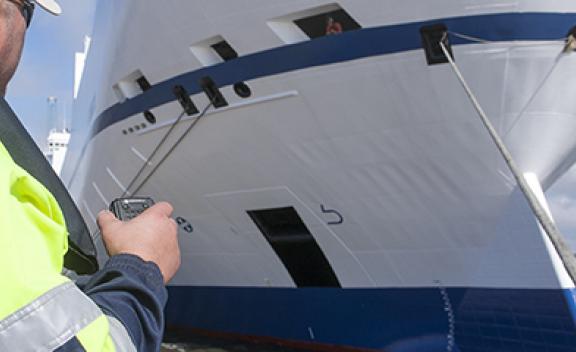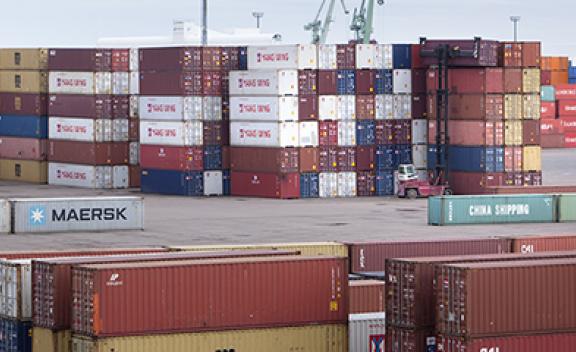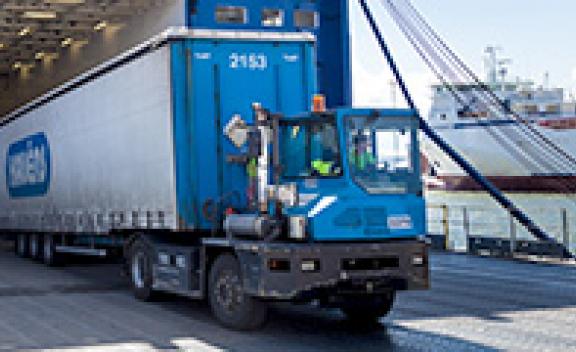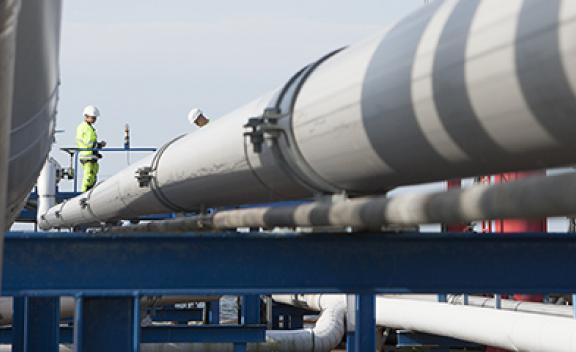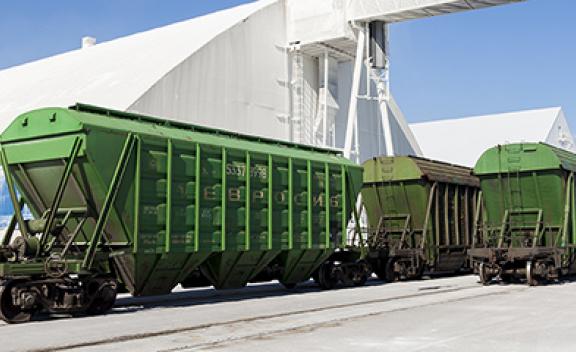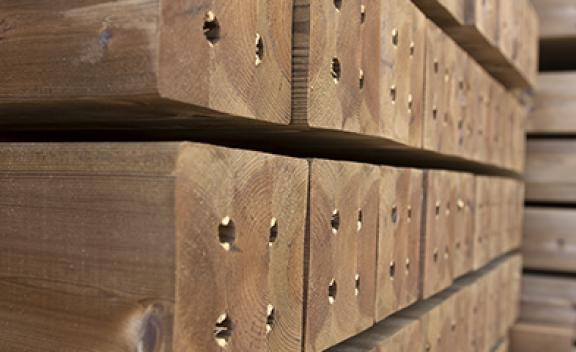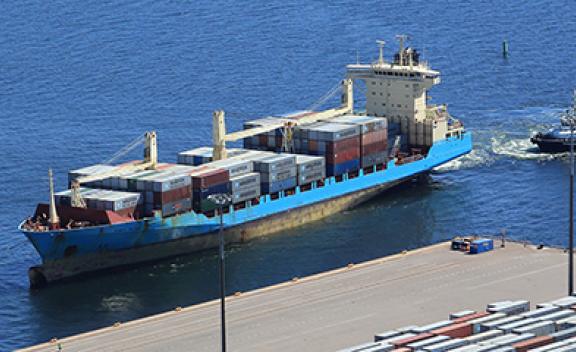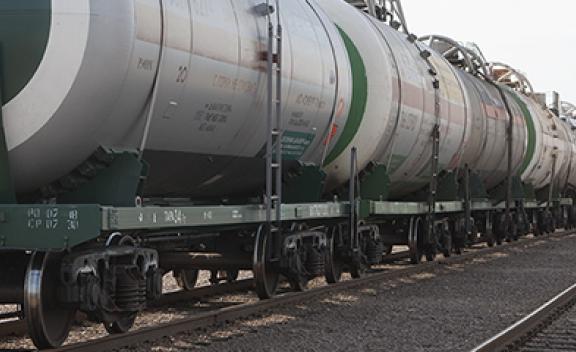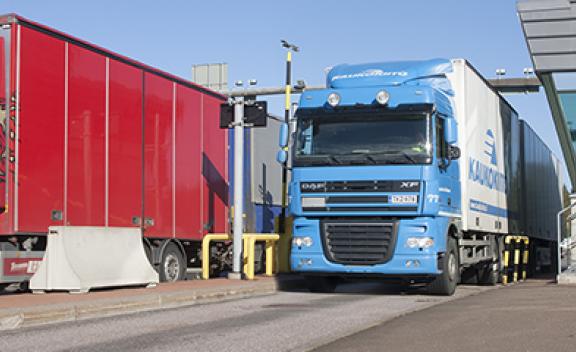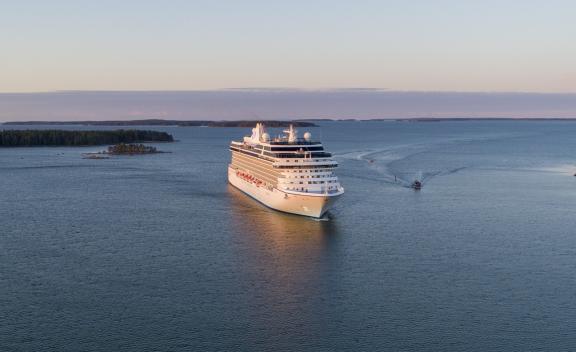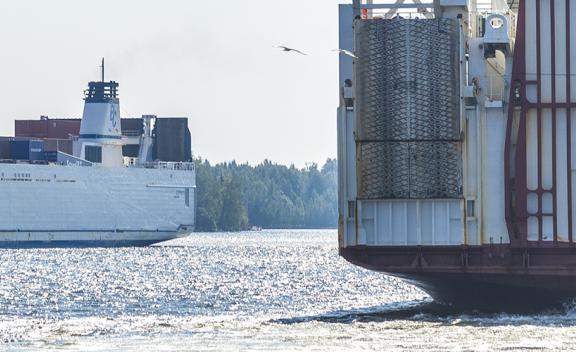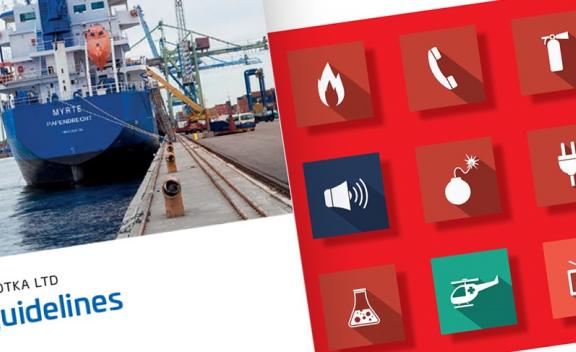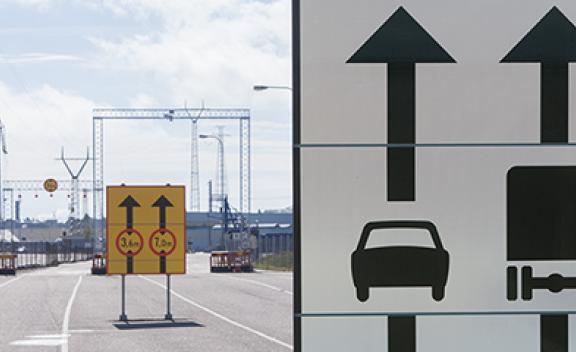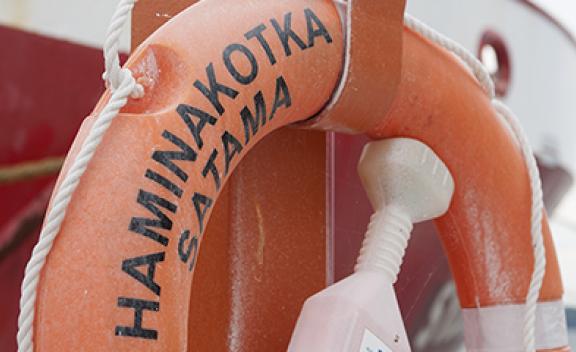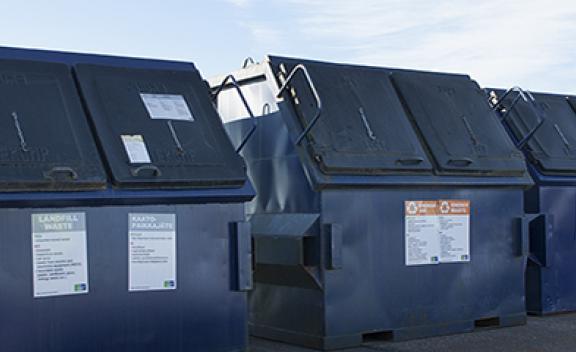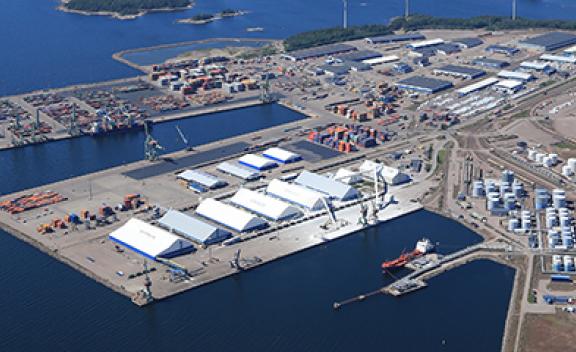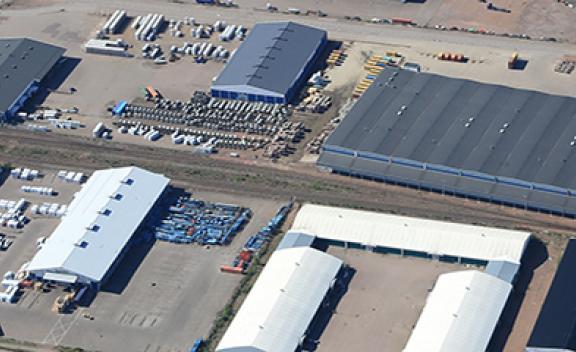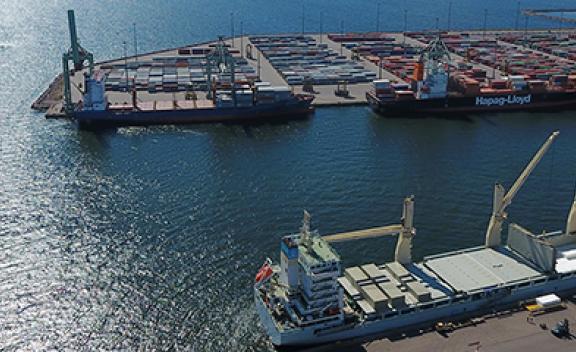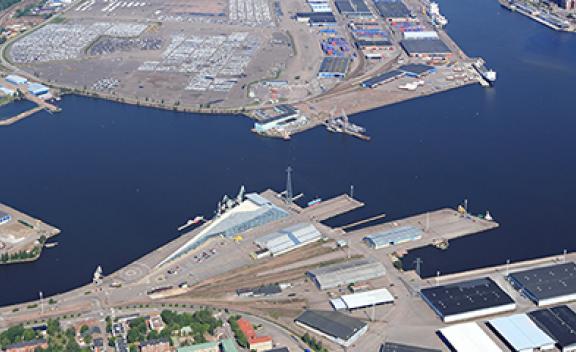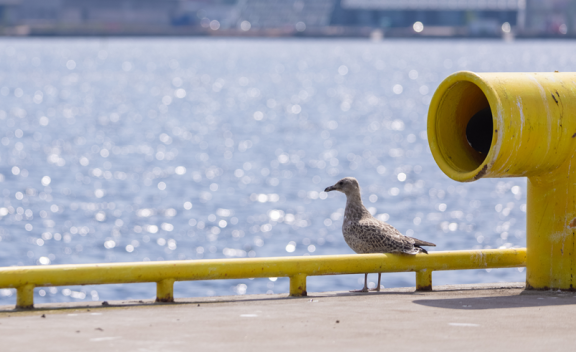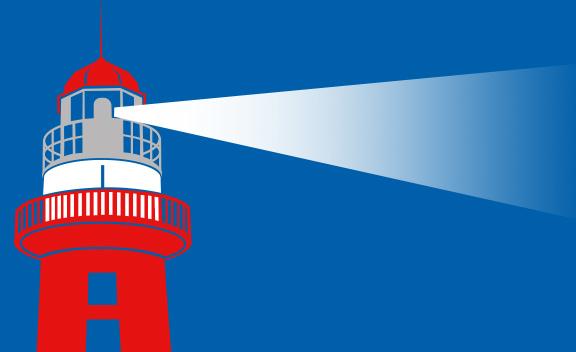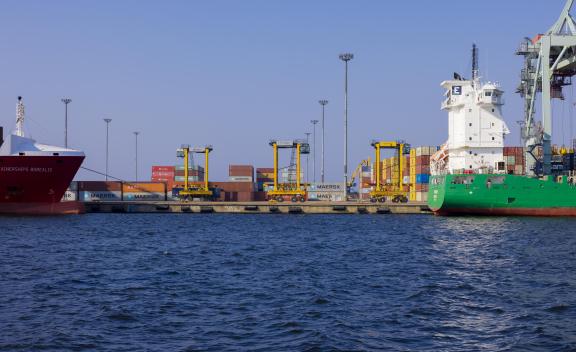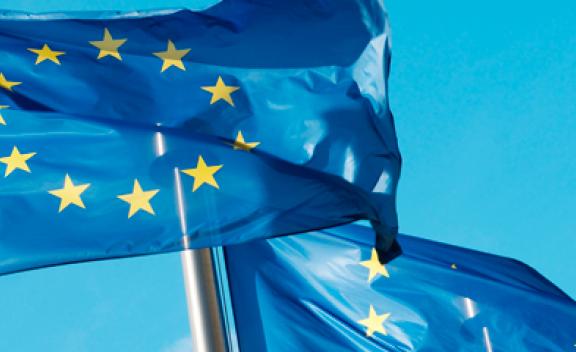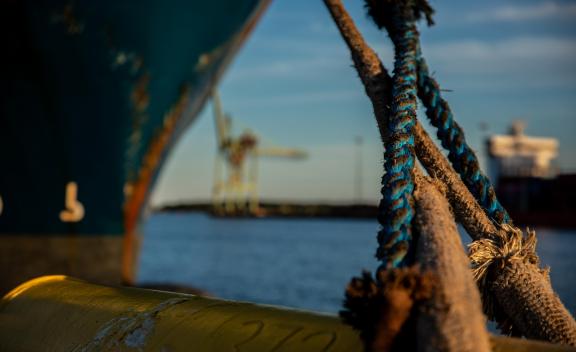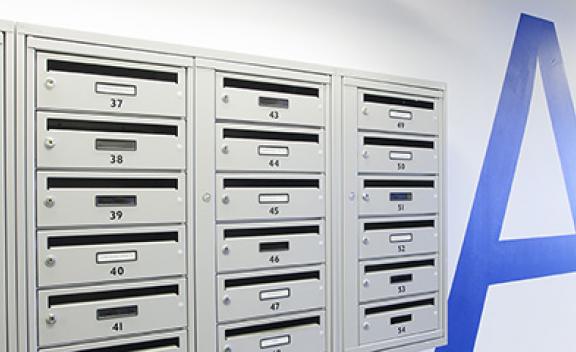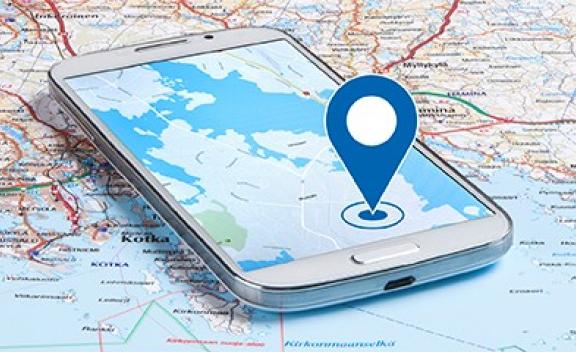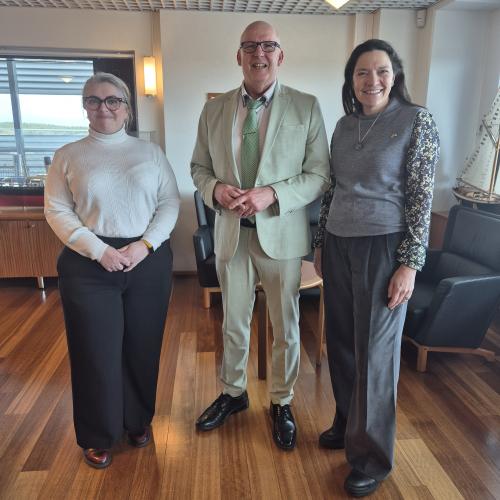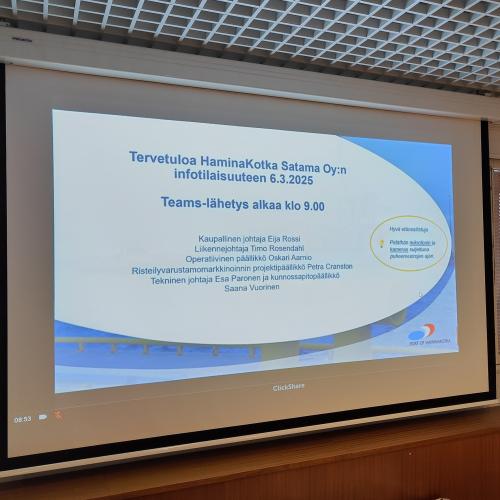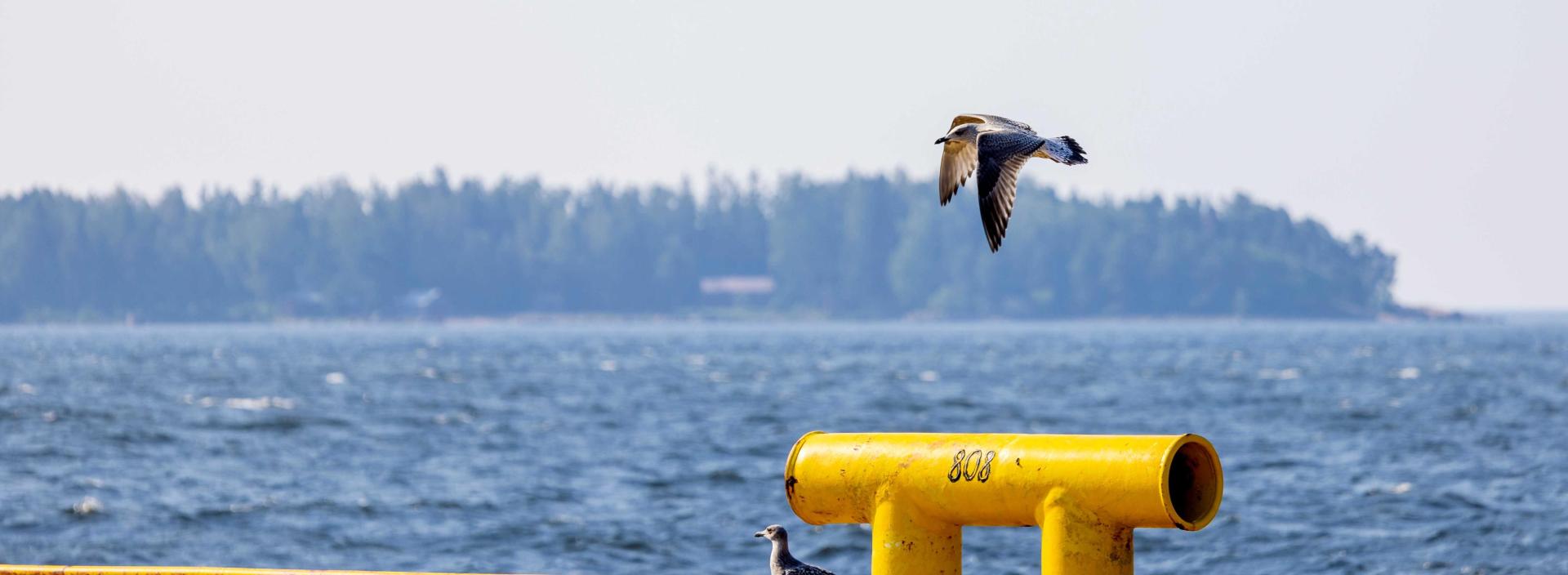
A large volume of eutrophying nutrients, such as phosphorus and nitrogen, end up in the Baltic Sea every year when fertilisers are loaded. At worst, a single fertiliser port can discharge as much nitrogen into the Baltic Sea every year as the wastewater treatment plant of a medium-sized Finnish city. The state of the Baltic Sea can be significantly improved by working with port operators to reduce nitrogen and phosphorus emissions.
A total of more than 45 million tons of agricultural fertilisers pass through the Baltic Sea’s ports every year. They are mainly transported as bulk cargos, which means that fertiliser is prone to being spread by the wind during loading or washed off the quay by rainwater.
The measurements carried out in the John Nurminen Foundation’s Fertiliser Shipping project show that the maritime transport of fertiliser and its handling at ports are both significant sources of emissions into the Baltic Sea. Fertilisers contain large volumes of nitrogen and phosphorus in a soluble form that is favourable to algae. When they end up in the water, they strongly accelerate algae growth, that is, increase the eutrophication of the sea. Eutrophication is the most significant environmental issue in the Baltic Sea.
“Baltic Sea ports handle such large volumes of fertiliser that even a relatively small amount of waste during loading causes significant eutrophication in the Baltic Sea,” says Eeva Tähtikarhu, who is project manager for the John Nurminen Foundation’s Fertiliser Shipping project.
Finnish fertiliser ports are forerunners in solving the problem
Finland’s three most significant fertiliser ports are located in Kokkola, Kotka and Uusikaupunki. The largest is the Port of HaminaKotka, where more than two million tons of nitrogen fertilisers are loaded each year.
Monitoring carried out in collaboration between the John Nurminen Foundation and the Port of HaminaKotka indicates that the nitrogen load caused by the port totals hundreds of tons per year. This is equivalent to the annual load caused by a wastewater treatment plant in a medium-sized city. Based on this estimate, the emissions caused by the port appear to be higher than the total nitrogen emissions into the Gulf of Finland from all industry in Kymenlaakso. So even small improvements can lead to major emission reductions.
Other major point sources of nutrient emissions in Finland, such as industrial plants and wastewater treatment plants, are required to monitor their emissions closely. No emissions limits have yet been set for fertiliser ports, and environmental authorities do not require ports to monitor their total nutrient emissions.
However, Finnish port operators have boldly addressed this problem. Together with the John Nurminen Foundation, port operators have sought to reduce emissions by, for example, training personnel, intensifying cleaning in the port area and investing in loading equipment.
“Fertilisers must be transported to secure global food supply, but it’s very important to load them with as little environmental impact as possible. The Port of HaminaKotka is the first port to have monitored its nutrient emissions over a longer period of time, and collaboration between a number of operators has led to the discovery of effective practices for reducing nutrient emissions,” says Kimmo Naski, CEO of the Port of HaminaKotka.
It is the port operators who load and unload ships that will play a key role in reducing emissions.
“The Baltic Sea is the most important operating area in our business. We are therefore aware of our responsibility, and also feel obliged to participate in projects that reduce nutrient emissions into the Baltic Sea and improve its condition. When we minimise fertiliser emissions, we also improve the safety and efficiency of our loading processes. All remedies will reduce cargo losses during handling, which also benefits consigners,” says Tero Kosonen, CEO of the port operator Rauanheimo.
“The preliminary monitoring results indicate that emissions have been reduced. By working together, we have found ways for Finnish port operators to achieve emission reductions. This will also enable us to set an example for other countries bordering the Baltic Sea,” says Eeva Tähtikarhu.
Fertiliser port emissions from all coastal states
In addition to Finland, a lot of fertilisers are handled at ports in Russia, the Baltic countries, Poland and Germany in particular.
The John Nurminen Foundation cooperates internationally with ports and fertiliser industry operators in the Baltic Sea region to reduce emissions. Under the Foundation’s leadership, the Baltic Marine Environment Protection Commission (HELCOM) is currently drawing up guidelines for the responsible handling of fertilisers throughout the Baltic Sea region.
“It’s important to bring fertiliser emissions within the scope of international environmental regulation, so that emission reductions can be guaranteed in all Baltic Sea countries,” says Ulla Rosenström, John Nurminen Foundation’s Director of Marine Environment.
Eeva Tähtikarhu
Project Manager, marine traffic
eeva.tahtikarhu @ jnfoundation.fi
+358 50 314 2102
